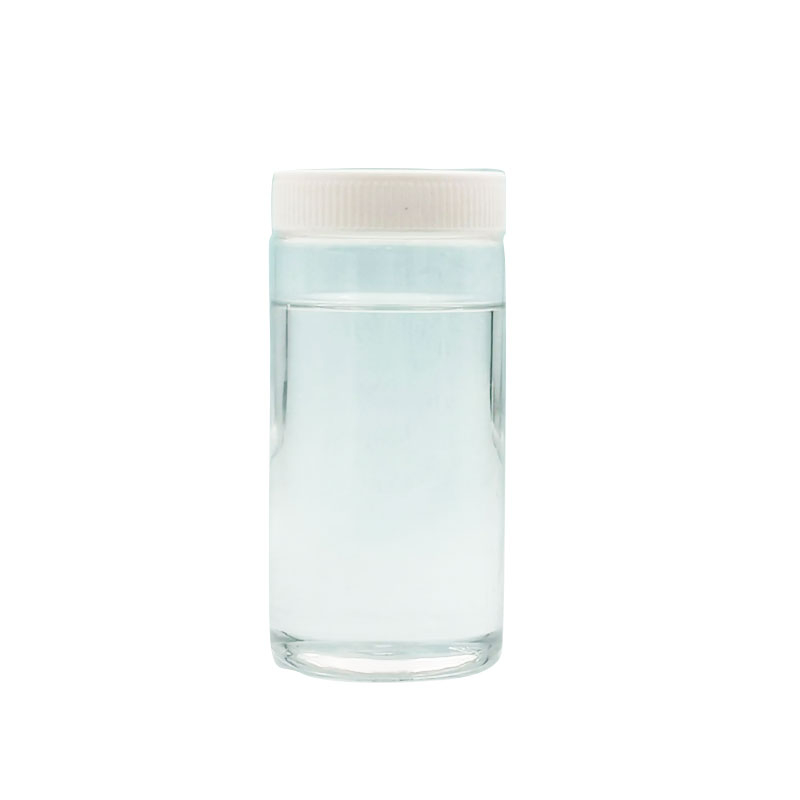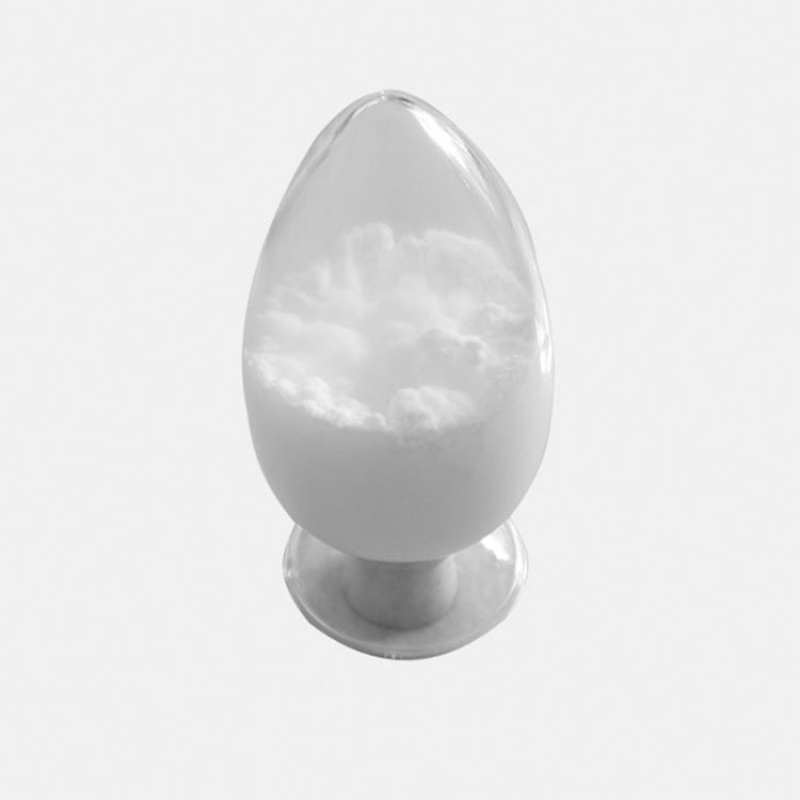Products Description of ATP Disodium Salt CAS#987-65-5DISODIUM ADENOSINE TRIPHOSPHATE, alias: 5'-adenosine triphosphate disodium salt. Adenosine triphosphate disodium is mainly used as a skin conditioner in cosmetics and skin care products.
Contact Now
Products Description of Disodium sulfide CAS#1313-82-2Sodium sulfide, also known as stinky alkali, stinky soda, or sulfide alkali, is an inorganic compound with the chemical formula Na2S.
Contact Now
Products Description of Adenosine5'-(tetrahydrogen triphosphate), disodiuM salt, trihydrate (9CI) CAS#51963-61-2 This product is white crystal or off-white powder, odorless, slightly sour, and hygroscopic. It is easily soluble in water and very slightly soluble in ethanol, ether, chloroform and benzene. It is relatively stable in alkaline solutions and easily decomposed in acidic and neutral solutions.
Contact Now
l-Glutamic acid, N-coco acyl derivs., disodium salts Chemical Propertiesdensity 1.318[at 20℃]vapor pressure 0Pa at 20℃pka1.52[at 20 ℃]Water Solubility 450g/L at 20℃LogP-4.48 at 20℃EPA Substance Registry SystemL-Glutamic acid, N-coco acyl derivs., disodium salts (68187-30-4)Factory and Equipment ShowFast delivery timeInventory 2-3 working days New production 7-10 working days
Contact Now
Products Description of 2,7-naphalenedisulfonic acid CAS#1655-35-2 Sodium 2,7-naphthalene disulfonate, white powder, is mainly used in organic synthesis and dye industry.2,7-Naphthalenedisulfonic acid disodium salt Chemical Propertiesform powder to crystalcolor White to Light yellow to Light orangeCAS DataBase Reference1655-35-2(CAS DataBase Reference)EPA Substance Registry System2,7-Naphthalenedisulfonic acid, disodium salt (1655-35-2)Safety InformationHazard Codes XiRisk Statements 36/37/38Safety Statements 37/39-26Hazard Note IrritantHS Code 2904
Contact Now
Products Description of Sodium Copper Chlorophyllin CAS#11006-34-1Using natural green plant tissues, such as silkworm excrement, clover, alfalfa, bamboo and other plant leaves as raw materials, extracting with organic solvents such as acetone, methanol, ethanol, petroleum ether, etc., replacing the central magnesium ions of chlorophyll with copper ions, and saponifying it with alkali, removing the methyl and phytol groups, and forming the carboxyl group to become disodium salt. Therefore, sodium copper chlorophyll is a semi-synthetic pigment.
Contact Now
Ethylene glycol CAS#107-21-1It is colorless obvious viscous liquid with candy style and moisture absorption capability. It is additionally miscible with water, low-grade aliphatic alcohols, glycerol, acetic acid, acetone, ketones, aldehydes, pyridine and comparable coal tar bases.
Contact Now
1-Butanol CAS#71-36-3n-Butyl alcohol is a colourless flammable liquid with sturdy alcoholic odour. n-Butyl alcohol is a fantastically refractive liquid and burns with a strongly luminous flame. It is incompatible with robust acids, sturdy oxidising agents, aluminium, acid chlorides, acid anhydrides, copper, and copper alloys. n-Butyl alcohol has an considerable use in a giant quantity of industries.
Contact Now
Products Description of Trimethyl borate CAS#121-43-7Moisture-sensitive liquid, fuming in the air. Melting point -29.3℃, boiling point 68-69℃, forms azeotropic mixture with methanol, azeotropic point 55℃, relative density (20/4) 0.920, refractive index (nD25) 1.3543 (1.3548). Very flammable, flash point -1℃. Miscible with ether, methanol, tetrahydrofuran, isopropylamine and hexane.
Contact Now
Products Description of 1-Chloro-6,6-dimethyl-2-heptene-4-yne CAS#126764-17-8An intermediate in the synthesis of Terbinafine.1-Chloro-6,6-dimethyl-2-heptene-4-yne Chemical PropertiesBoiling point 207-208°Cdensity 0.946Fp 75°Crefractive index 1.4850storage temp. Sealed in dry,2-8°Csolubility Chloroform, Ethyl Acetate (Slightly), Hexane (Slightly), Methanol (Slightly)form Oilcolor Colourless to Pale YellowStability:Light SensitiveInChIInChI=1S/C9H13Cl/c1-9(2,3)7-5-4-6-8-10/h4,6H,8H2,1-3H3InChIKeyZIXABMZBMHDFEZ-UHFFFAOYSA-NSMILESC(Cl)C=CC#CC(C)(C)CCAS
Contact Now
Products Description of Diethylamino hydroxybenzoyl hexyl benzoate CAS#302776-68-7Diethylamino hydroxybenzoyl hexyl benzoate is an organic peroxide with strong oxidizing effect. It is easy to produce highly active free radicals during thermal decomposition. It is thermally unstable and may decompose at relatively low temperatures. During the decomposition process of diethylamino hydroxybenzoyl hexyl benzoate, a large amount of heat and gas is released, which increases the temperature and accelerates the decomposition.
Contact Now
Products Description of Saccharin CAS#81-07-2Pure saccharin is a non-toxic, non-caloric, non-nutritious sweetener that is not absorbed by the human body. Taking advantage of its sweet taste, it is used as a food additive to replace sugar. As a food additive, saccharin has no nutritional value to the human body except that it causes a sweet feeling in the taste buds and the sweetness of the taste can meet the requirements of consumers.
Contact Now
Products Description of Pyromellitic Dianhydride CAS#89-32-7The English name of pyromellitic dianhydride is Pyromellitic Dianhydride (abbreviated as PMDA, the same below), which is mainly used to synthesize polyimide.
Contact Now
Products Description of Sodium cocoyl isethionate CAS#61789-32-0Sodium Cocoyl Isethionate (SCI) is a mild, foaming and highly stable anionic surfactant. SCI has excellent hard water resistance, very low toxicity and good biodegradability.
Contact Now
Products Description of SODIUM DIHYDROGEN CITRATE CAS#18996-35-5Colorless crystals or white crystalline powder, odorless, salty and slightly sour. Soluble in water, insoluble in ethanol. Ph value of 10% aqueous solution is 3.4-3.8.
Contact Now
Products Description of Sodium carboxymethyl cellulose CAS#9004-32-4Sodium carboxymethylcellulose (CMC) is a carboxymethylated derivative of cellulose, also known as cellulose gum. It is an anionic cellulose ether and the main ionic cellulose gum. It is usually an anionic polymer compound obtained by reacting natural cellulose with caustic soda and monochloroacetic acid. The molecular weight of the compound ranges from several thousand to millions. CMC is a white or milky white fibrous powder or granule with a density of 0.5-0.7 g/cm3. It is almost odorless and tasteless and hygroscopic.
Contact Now
Products Description of Sulfonic acids, petroleum, sodium salts CAS#68608-26-4White powderSulfonic acids, petroleum, sodium salts Chemical PropertiesBoiling point 1042.61℃[at 101 325 Pa]vapor pressure 0Pa at 25℃Water Solubility 0.065ng/L at 25℃LogP22.12 at 25℃EPA Substance Registry SystemPetroleum sulfonic acids, sodium salts (68608-26-4)Factory and Equipment ShowFast delivery timeInventory 2-3 working days New production 7-10 working days
Contact Now
Products Description of Sodium Sulfide CAS#1313-82-2 Sodium sulfide is also known as alkali sulfide, stinking soda, and stinking alkali. The pure product is colorless or slightly purple prismatic crystals at room temperature. Industrial sodium sulfide is often pink, brownish red, or khaki blocks due to impurities. It has the smell of rotten eggs, is corrosive, and toxic. The density is 2.427. It decomposes at 920°C. It is soluble in cold water and easily soluble in hot water.
Contact Now
Products Description of Bismuth citrate CAS#813-93-4Used as an intermediate of bismuth potassium citrateBismuth citrate Chemical PropertiesMelting point 300 °C (dec.) (lit.)density 0.94 g/mL at 25 °C (lit.)vapor pressure 0Pa at 20℃storage temp. -20°C Freezersolubility Water (Very Slightly)form Crystalline Powdercolor WhiteWater Solubility Insoluble in water, alcohol, ether. Soluble in ammonia solution and in solution of alkali citrates. Typical tap density 0.50g/cm^3.Soluble in ammonia, alkali citrates.
Contact Now
Products Description of Benzalkonium Chloride CAS#63449-41-2Benzalkonium chloride is a cationic surfactant and a non-oxidizing fungicide. It has a broad spectrum and high efficiency in killing bacteria and algae. It can effectively control the reproduction of bacteria and algae and the growth of slime in water. It has good slime stripping effect and certain dispersion and penetration effects. It also has certain degreasing, deodorizing and corrosion inhibition effects.
Contact Now
Products Description of Cobalt Sulfate Heptahydrate CAS#10026-24-1A common cobalt compound that appears as a blue crystalline solid and is soluble in water. In the air, it gradually loses its crystal water and becomes powdery. Cobalt sulfate heptahydrate is widely used in chemical experiments. It can be used as a catalyst in organic synthesis reactions. In addition, it can be used to prepare other cobalt compounds, such as cobaltates and cobalt oxides.
Contact Now
Products Description of Magnesium oxide CAS#1309-48-4Magnesium oxide is commonly known as magnesia, also known as magnesium oxide. It is a typical alkaline earth metal oxide with the chemical formula MgO. It is a white powder with a melting point of 2852℃, a boiling point of 3600℃ and a relative density of 3.58 (25℃). It is soluble in acid and ammonium salt solutions. It reacts slowly with water to form magnesium hydroxide. It can be dissolved in a carbon dioxide aqueous solution to form magnesium bicarbonate.
Contact Now
Products Description of Cupric oxide CAS#20427-59-2Chemical formula Cu(OH)2. Molecular weight 97.56. Blue to blue-green gel or light blue crystalline powder, toxic. Relative density 3.37. Color darkens at 60-80℃. Insoluble in cold water, decomposes into copper oxide in hot water, dissolves in acid to form divalent copper salt, dissolves in excess concentrated alkali to form tetrahydroxy cuprate, dissolves in concentrated ammonia or potassium cyanide solution to form dark blue tetraamminecopper(II) dihydroxide solution or colorless potassium tetracyanocuprate(II) solution.
Contact Now
Products Description of Cadmium oxide CAS#1306-19-0Cadmium oxide is an oxide of cadmium with the molecular formula CdO, which is carcinogenic. Cadmium oxide can dissolve in acid to form Cd[H2O]62+; it can also dissolve in alkali to form [Cd(OH)4]2??.Cadmium oxide Chemical PropertiesMelting point 900°CBoiling point 1385 °Cdensity 8.15 g/mL at 25 °C(lit.)storage temp. Store below +30°C.solubility 0.0021g/lform powdercolor brownSpecific Gravity8.15OdorOdorlessPH9-10 (H2O)(aqueous suspension)Water Solubility insoluble.
Contact Now

































